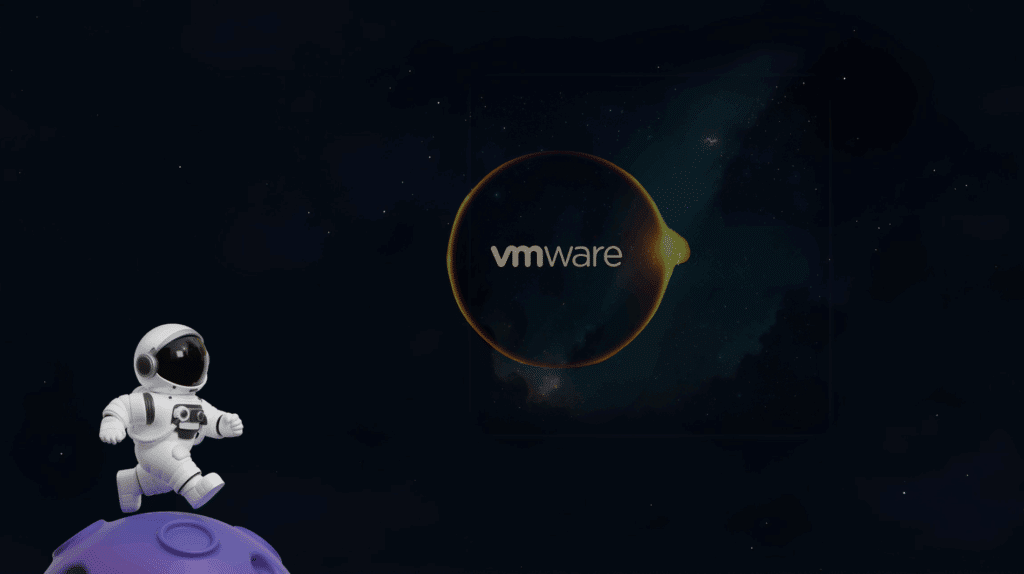VMware Extended Support Lifecycles Signal Strategic Retreat Amid Customer Backlash

In a significant strategic pivot that reflects mounting enterprise resistance to Broadcom’s aggressive licensing overhaul, VMware has fundamentally altered its product development approach by extending release cycles from two to three years while simultaneously expanding support lifecycles. The changes, announced alongside the general availability of VMware Cloud Foundation 9.0, represent what industry analysts characterize as a “strategic retreat” from the company’s historically rapid innovation cadence, a shift driven by widespread customer fatigue and unprecedented cost pressures.
A New Development Philosophy Emerges
VMware’s announcement marks a dramatic departure from its traditional approach to product development and customer engagement. The company has transitioned from its previous 5+2 support model, five years of general support with an optional two years of extended support, to a more generous 6+1 framework that provides six years of standard support plus an additional year of extended coverage [1]. Simultaneously, the release cadence has shifted from biannual updates within two-year major release cycles to a more measured approach featuring minor releases every nine months within three-year major cycles.
The new model maintains the same number of updates per major release cycle, delivering four minor versions (such as VCF 9.0 through 9.3) but stretches them across three years instead of two[2]. This approach provides initial minor releases with 27 months of support each, while the final release in each cycle receives an extended 45-month support window, creating multiple upgrade pathways for enterprise customers rather than forcing lock-step progression.
VMware has positioned these changes as a direct response to customer feedback, emphasizing that the modifications will provide “more predictable release dates, offer longer support periods, and provide more flexibility to better fit into customer update windows”[3]. However, industry observers note that this represents a fundamental philosophical shift for a company that has historically championed rapid innovation cycles as a competitive advantage.
Industry Analysis: Responding to Customer Exhaustion
The timing and nature of these changes reflect what industry experts describe as unprecedented customer resistance to Broadcom’s licensing transformation. Sanchit Vir Gogia, chief analyst and CEO at Greyhound Research, observed that “CIOs are treating the current 24-36 month period as critical for platform strategy decisions,” noting that the extended timelines arrive as enterprises face license cost increases of up to 500%[4].
The pressure on VMware’s customer base has reached critical levels, with Forrester Research estimating that up to 20% of the company’s enterprise customers are actively evaluating alternatives, citing “exhaustion” with price hikes and forced bundling[5]. This customer sentiment has been exacerbated by Broadcom’s requirement, implemented in 2025, that customers license a minimum of 72 cores per order regardless of actual needs, while bundling previously separate products into comprehensive subscription packages.
Tanvi Rai, senior analyst at Everest Group, emphasized the strategic implications of these pressures, recommending that “large enterprises should allocate 2.5 to 3 years to effectively evaluate, plan, and execute their migration strategy”[6]. She noted that organizations should complete proof-of-concepts and commercial negotiations by the first half of 2026 to enable phased migration through mid-2027, when VCF 8 support ends.
Legal and Regulatory Pressures Mount
The customer resistance has manifested in more than just market dynamics, reaching legal flashpoints that have forced VMware to reconsider its approach. The Dutch Ministry of Infrastructure and Water Management successfully sued VMware, compelling the company to provide two years of migration support after the agency faced an 85% cost increase[7]. This legal victory has emboldened other organizations to challenge VMware’s pricing practices and has contributed to the broader atmosphere of customer resistance.
The legal pressure represents a significant escalation from traditional customer-vendor disputes, suggesting that Broadcom’s aggressive monetization strategy has pushed some customers beyond their tolerance threshold. Industry analysts view this as a warning sign that the company’s approach may need fundamental recalibration to maintain customer relationships and avoid further regulatory scrutiny.
Technical Improvements Amid Strategic Challenges
Despite the controversy surrounding licensing changes, VMware has continued to deliver technical innovations that may help justify higher costs in certain environments. VCF 9.0 introduces substantial performance enhancements, including a 40% improvement in server consolidation through Advanced NVMe Memory Tiering and the introduction of vSAN Global Deduplication for improved storage efficiency[8].
Gogia noted that “while licensing reforms have elevated per-core costs by 85–500%, recent platform releases offer measurable gains, such as 38% improvement in memory tiering efficiency”[9]. This creates a complex value equation for enterprises, where technical improvements must be weighed against dramatic cost increases and reduced flexibility in licensing terms.
The technical enhancements are particularly relevant for CPU-constrained environments, where Rai observed that “the total cost of ownership can improve or remain flat in CPU-constrained environments due to technical and structural enhancements”[10]. However, she cautioned that the impact varies significantly by sector, with organizations in logistics, utilities, and digital commerce facing particular challenges due to high workload variability.
Market Diversification as Strategic Response
The combination of cost pressures and extended support timelines is driving a fundamental shift in enterprise virtualization strategy. Rather than pursuing wholesale platform replacements, organizations are adopting what Gogia termed “controlled decentralisation”, a pragmatic approach that maintains VMware for mission-critical workloads while deploying alternatives in edge locations, development environments, and new container-native applications[11].
This strategic evolution is enabled by the maturation of alternative platforms, including Nutanix AHV, Azure Stack HCI, and OpenShift Virtualization, which have developed capabilities to handle most general-purpose workloads while supporting high availability, disaster recovery, and GPU virtualization[12]. Rai estimated that “roughly 70–80% of workloads could move off VMware today,” though she noted that “full VMware-free enterprise-scale operations, especially for tier-1 systems, likely won’t be mainstream until late 2026 or beyond”[13].
Desktop Virtualization Changes Signal Broader Strategy
Beyond the VCF lifecycle modifications, VMware has implemented additional changes that reflect its evolving customer relationship strategy. The company announced that its Workstation and Fusion desktop hypervisors will no longer support automatic product updates, requiring users to manually download updates from the Broadcom Support Portal[14]. This change, while seemingly minor, represents another step toward tighter control over the customer experience and potentially additional friction in the update process.
The desktop virtualization changes align with Broadcom’s broader strategy of consolidating control over the VMware ecosystem while potentially creating additional touchpoints for customer engagement and revenue generation. Industry observers note that such changes, while individually small, contribute to a cumulative sense of reduced customer autonomy and increased vendor control.
Strategic Implications and Future Outlook
The lifecycle changes represent more than tactical adjustments to product development timelines; they signal a fundamental recalibration of VMware’s relationship with its customer base under Broadcom ownership. The extended support windows and slower release cadence acknowledge that the company’s aggressive monetization strategy has created customer resistance that threatens long-term business sustainability.
Gogia characterized the emerging customer strategy as “not an ideological shift, it is a pragmatic hedging strategy designed to manage cost, optionality, and roadmap alignment”[15]. This pragmatic approach reflects a mature market response to vendor consolidation and pricing pressure, where enterprises are increasingly willing to accept the complexity of multi-vendor environments in exchange for reduced dependency on any single platform provider.
The success of VMware’s strategic pivot will ultimately depend on its ability to balance revenue optimization with customer retention. While the extended support lifecycles and slower release cadence may reduce some customer pressure in the short term, the underlying tensions around pricing and licensing flexibility remain unresolved. The company’s ability to navigate these challenges while maintaining its technical leadership position will determine whether the current changes represent a temporary adjustment or the beginning of a more fundamental transformation in the virtualization market.
As enterprises continue to evaluate their platform strategies in this evolving landscape, VMware’s lifecycle changes provide additional time for decision-making while potentially reducing the urgency that has characterized customer relationships since the Broadcom acquisition. However, the fundamental questions about cost, flexibility, and vendor dependency remain, suggesting that the current changes may provide breathing room rather than permanent resolution to the underlying market tensions.
References
[1] The Register. “VMware slows release cadence for flagship VCF suite.” July 18, 2025. https://www.theregister.com/2025/07/18/vmware_product_lifecycle_changes/
[2] VMware Cloud Foundation Blog. “VMware Cloud Foundation 9 Ushers In New Support Model and Release Cadence.” July 16, 2025. https://blogs.vmware.com/cloud-foundation/2025/07/16/vmware-cloud-foundation-9-ushers-in-new-support-model-and-release-cadence/
[3] Ibid.
[4] Network World. “Facing CIO backlash, VMware extends support and slows down release cycles.” July 18, 2025. https://www.networkworld.com/article/4024900/facing-cio-backlash-vmware-extends-support-and-slows-down-release-cycles.html
[5] Ibid.
[6] Ibid.
[7] Ibid.
[8] Ibid.
[9] Ibid.
[10] Ibid.
[11] Ibid.
[12] Ibid.
[13] Ibid.
[14] The Register. “VMware slows release cadence for flagship VCF suite.” July 18, 2025.
[15] Network World. “Facing CIO backlash, VMware extends support and slows down release cycles.” July 18, 2025.









